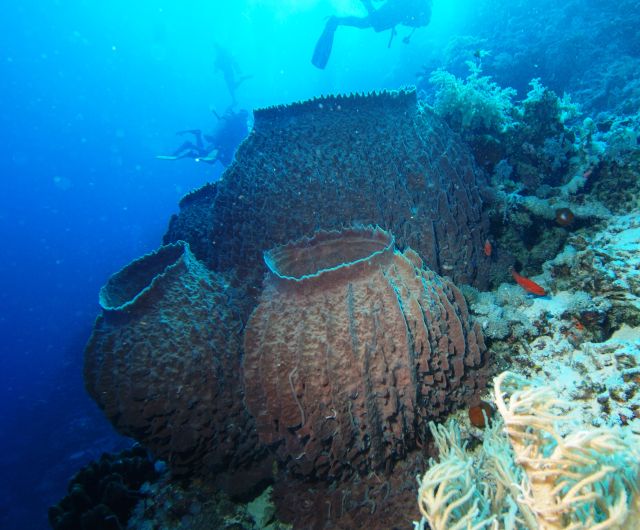Sponge full of cholesterol pushes animal life back to 650 million years
Ars Technica » Scientific Method 2016-02-26

These barrel sponges have one hell of a pedigree. (credit: Albert Kok/Wikimedia)
The earliest chapters in the history of life are in some ways the most interesting, but they're also the hardest to read. The pages are badly stained and tattered, and the print was terribly small to begin with. You can occasionally trip on a dinosaur femur, but any evidence that remains from the earliest animals is incredibly subtle.
Despite the challenges, we've learned that the “Cambrian explosion” was far from the start of multicellular life. The title for “most ancient animal” currently belongs to the sponge. A recently described fossil just a millimeter across appears to be a 600 million year old sponge—that’s 60 million years before the start of the Cambrian period. But we can find chemical traces going back another 50 million years that have been interpreted as a calling card for sponges. Some have challenged that interpretation, however, on the grounds that this chemical “biomarker” is not unique to sponges and could instead have come from a type of algae.
The biomarker of interest is the remnant of a sterol (as in “cholesterol”), which is a key component in the cells of eukaryotes (as opposed to bacteria and archaea). With a small bit of the chemical structure lopped off, you get a sterane that can happily hang around in the rock record. A group of researchers led by MIT’s David Gold took a closer look at the sterol 24-isopropylcholesterol in sponges and other organisms to find out more about when the genes for it evolved—and what is most likely to have left it in 650 million year old rocks.